Art Fairs
Art Helsinki 2016 Looks Beyond Finland’s Blossoming Art Market
But local collectors are focusing on Scandinavian artists.
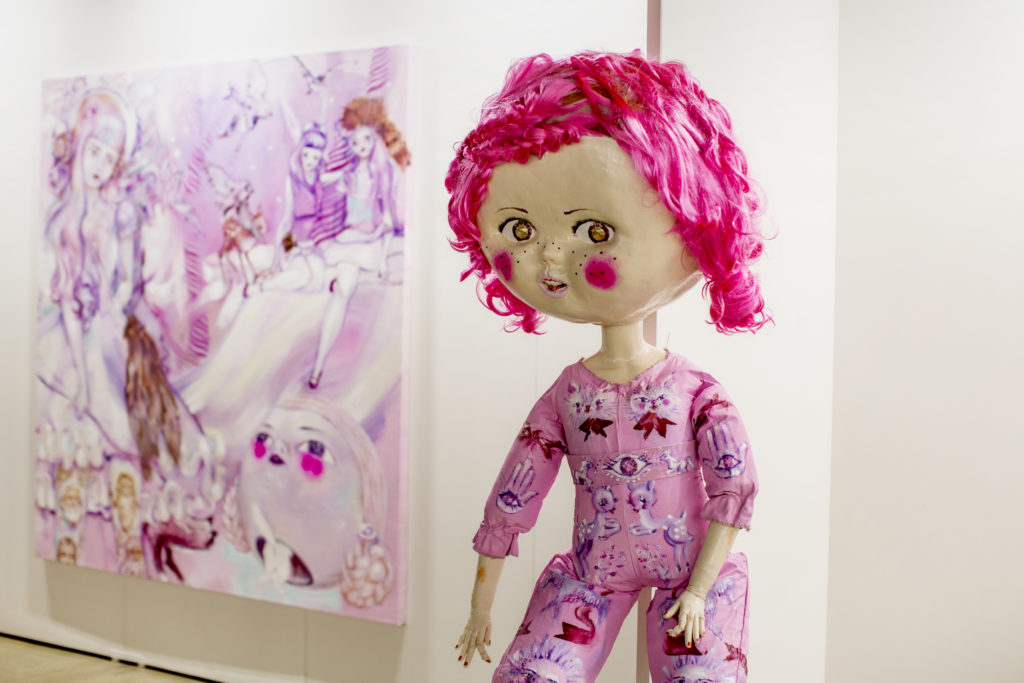
But local collectors are focusing on Scandinavian artists.

Emily Nathan

As the sun set on Wednesday evening, a group of journalists sat down to smoked herring roulades and cloud-berry cocktails at a low-lit restaurant on the Helsinki waterfront. “Everybody thinks that Finland is so far away, so far north—but it’s not,” somebody said. “I mean, it’s not even cold here. And it’s only an hour’s flight from Berlin!”
So went the introduction to ArtHelsinki 2016, the little-known Finnish art fair founded in 2008 as a parenthesis to the world-renowned Habitare Furniture, Interior and Design Fair. Overhauled and relaunched this year as a curated contemporary art event with reach beyond its geographical borders, ArtHelsinki’s sixth edition occupies a small section of the Messukeskus exhibition hall—which also houses Habitare—from September 7 to 11, just past a candy stand selling bright ropes of salt- and apple-flavored liquorice.
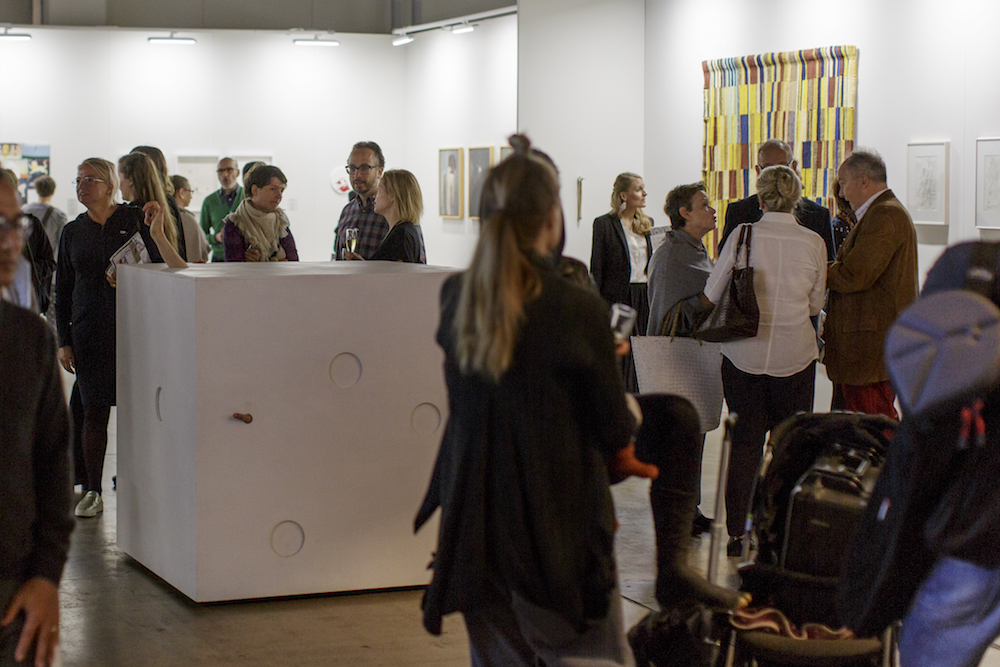
ArtHelsinki 2016. Courtesy ArtHelsinki
Announced during the fair’s 2015 edition, its new format is the work of a mere 12 months—the blink of an eye in art-fair creation—and it is considered a beta-version, or a “prototype,” according to Stockholm-based curator Aura Seikkula, the show’s artistic director.
It is modest in size this year, but Seikkula is certain that it will soon succeed in bringing the arts of the Nordic region to the world, and in bringing the arts of the world to the Nordic region. While acknowledging the existence of Stockholm’s Market Art Fair and Copenhagen’s Chart Art Fair, she emphasizes the importance of Helsinki’s position as a link between Scandinavia and its Eastern neighbors, particularly Russia and the Baltic, a proximity she hopes to explore.
Related: Chart Art Fair Kicks Off In Style in Copenhagen
“Habitare has been a major success since the 1970s, and it has a wide audience of design collectors who come here for some of the world’s best design; in contemporary visual culture we talk a lot about the overlaps between these practices,” she told artnet News yesterday, as ArtHelsinki opened to the public.
“So we have this group of buyers with a strong appreciation for Finnish design, and the hope is to give them an easy transition to buying Finnish art. And eventually, we hope, to buying international art. But that has to start with exposure to art scenes that are not so safe or known.”
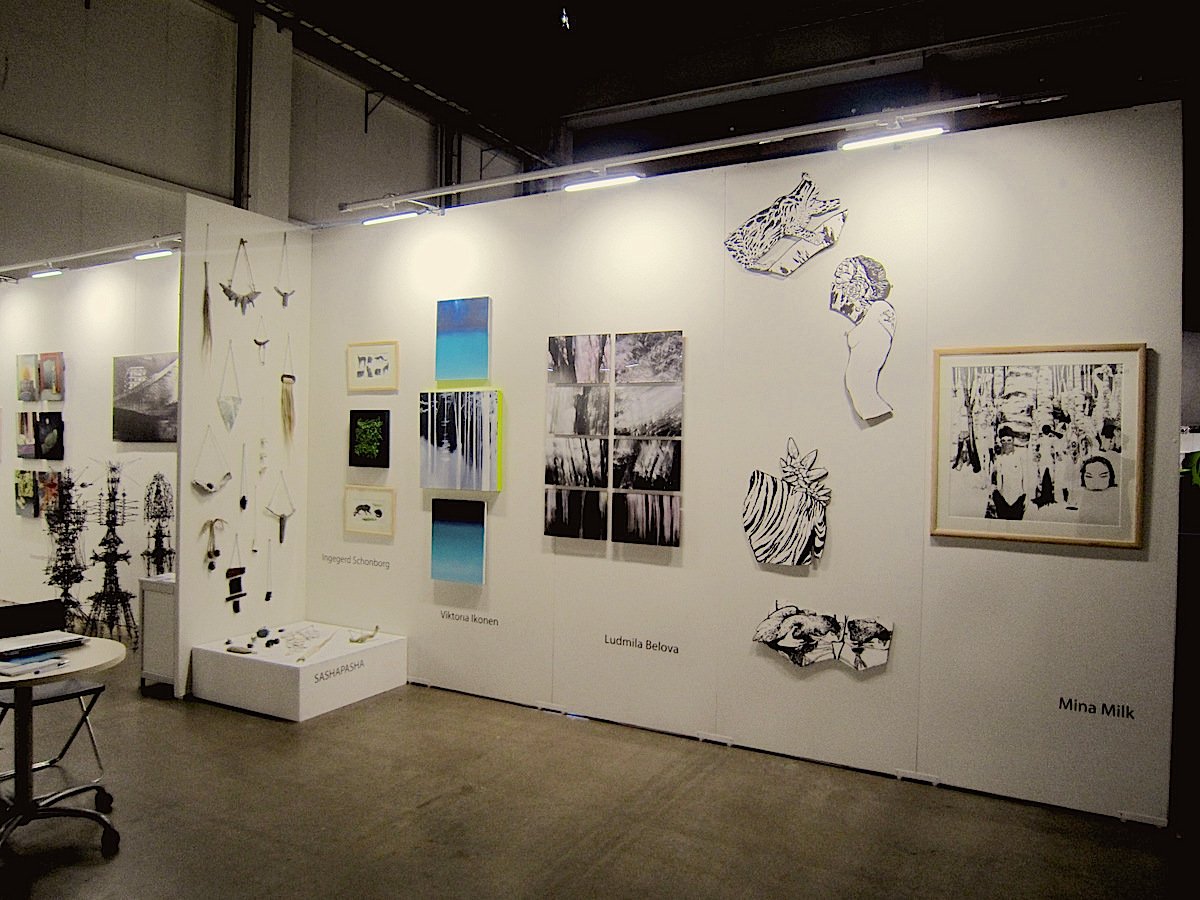
Saint-Petersburg based re:FLEX Gallery’s booth at ArtHelsinki. Photo Emily Nathan
To that end, Seikkula worked with Frame Visual Art Finland on a varied program of events and collaborations, and invited a handful of international exhibitors to show at the fair for the first time. Of the 14 participating galleries, more than half are from other countries, namely Russia, Spain, Norway, Sweden, Germany, Latvia, and the United States.
As a nod to the country’s enthusiastic embrace of advanced technologies, she asked Moving Image Art Fair-founders Murat Orozobekov and Edward Winkleman of New York’s Winkleman Gallery to curate a video and film program that showcases selected works submitted by the fair’s participants. And the show marks the debut Nordic appearance of humanoid robot Bina48—her first in a contemporary art context—in a visit organized with the US-based Streaming Museum.
Thank you @kampcollection and @HotelHaven for hosting Bina48 #arthelsinki2016 #art #technology pic.twitter.com/BQb2ixj2bb
— ArtHelsinki (@ArtHelsinkiFair) September 8, 2016
“Our main aim has been to create a new format for ArtHelsinki, and I think we have done that,” Seikkula added. “We really focused on curating the concept rather than the content, for now. It was quite amazing, actually: within the first hour or so of the preview, some galleries had nearly sold out.”
Indeed, at the close of the fair’s first day, there had been some action on the floor—though it was almost exclusively reserved for the Finnish. At Helsinki’s Saariaho Järvenpää, Katja Tukiainen’s sassy pink paintings of little girls in short dresses sold like hotcakes, with prices ranging from €2,160 for 40 x 50 centimeter canvases, to € 13,000 for a plush, mixed-media sculpture of a larger-than-life doll with rosy cheeks.
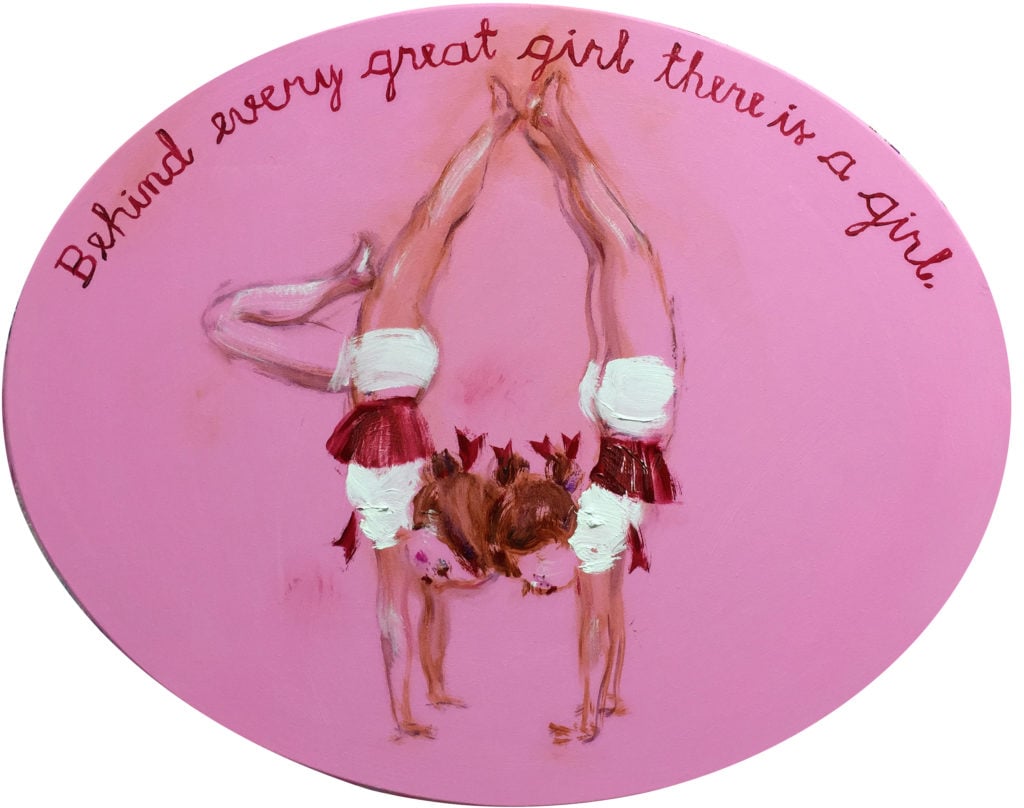
Katja Tuk, Behind every great girl there is a girl, (2016).
Sales were also abundant at Galleria Contempo, another Helsinki space. “We are lucky and we are happy,” said beaming director Jorma Teittinen, explaining that all of his booth’s painters did good business. Kia Taegen’s moody oil paintings offered views of pastoral landscapes reflected in quaint cottage windows for €3,100 each; Johanna Lumme, 2016 recipient of the Finnish Art Center Salmela’s prestigious Young Artist Award, had sold numerous thickly impastoed takes on Monet-like water lilies for €2,000-3,800; and Netta Tiitinen’s ambiguous canvases of figures floating on arrangements of spheres “describe people living in bubbles,” Teittinen said. “But the red ball in each one reminds us of reality, to live in the real world, and not just the bubbly, virtual world. If the virtual world takes us with it, then we might forget to live here and now.”
The show’s international galleries, unfortunately, fared less well, proving that Helsinki’s art market is a difficult one to penetrate. This is due in no small part to the fair’s collecting base, which is largely Finnish. “Collecting culture is only just developing here. We are a young country, so tastes are young and not brave yet,” said ArtHelsinki producer Kira Sjöberg. She added that Finnish tastes run toward the familiar, and often toward the conservative—an impression echoed by Madrid’s Espacio Mínimo gallery director Luis Valverde Espejo.
“I actually had someone come up and ask me if our works were for sale today! That just gives you a sense of how green the idea of collecting and an art fair really is here,” he said. “But I knew that before coming. And honestly, it takes time to enter a new market, especially here. The Finnish are very shy, like oysters! ”
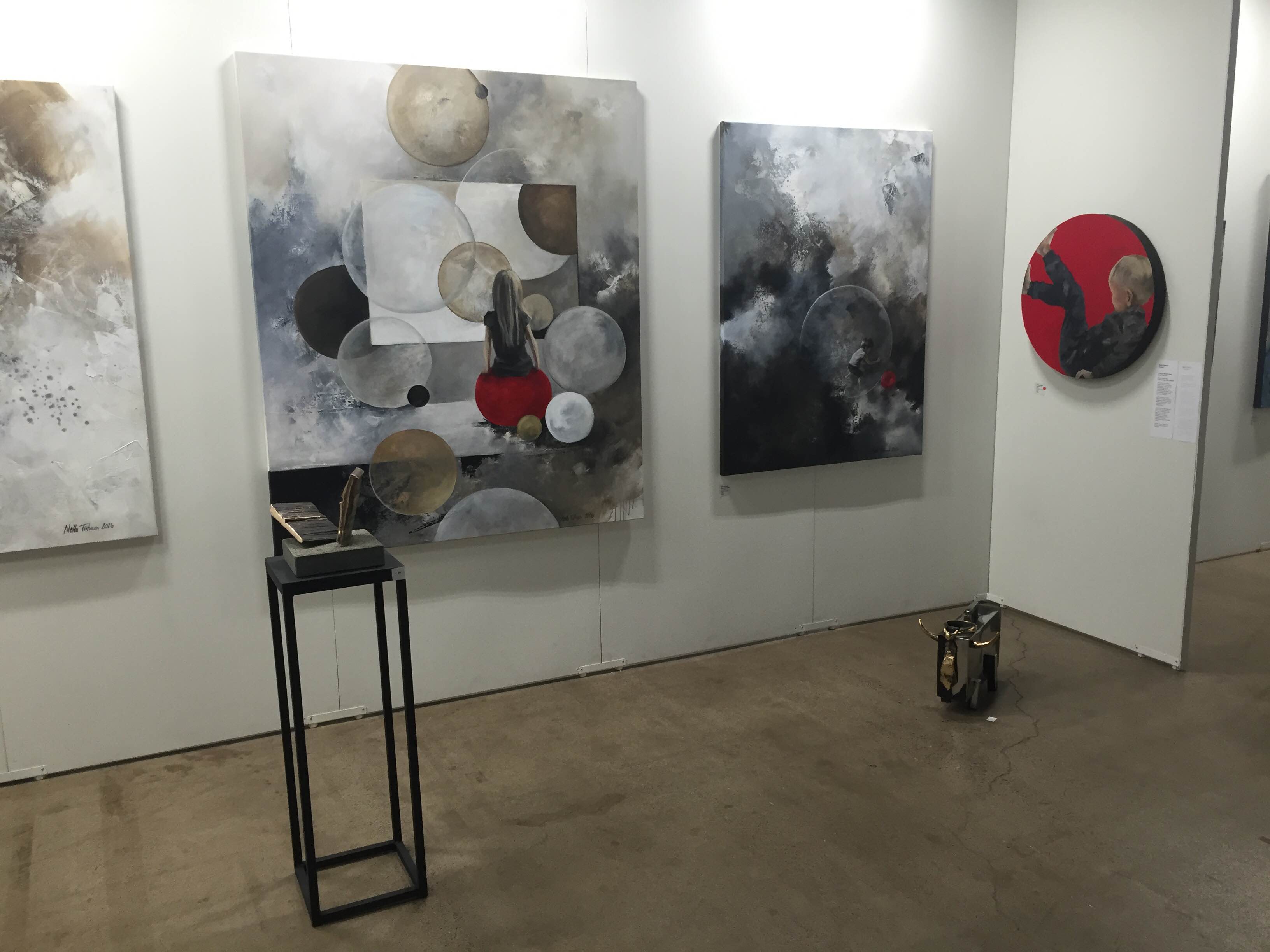
Works by Netta Tiitinen at Galleria Contempo, ArtHelsinki 2016
Nonetheless, international exhibitors familiar with the fair frequently remarked on its transformation. Urban Lorentzon, director of Stockholm’s Galleri Lorentzon, said he had participated in the fair since 2011, but that this year’s event was superior in every way. He was the only non-Finish presence to make sales—closing numerous deals on Jonas Torstensson’s vibrant, recycled-glass wall works, priced between €500 and 800. “The whole arrangement of the fair is of a higher quality this year, more professional,” he said. “To tell the truth, I don’t expect too much of this fair—but it feels different now.”
Siekkula maintains that things will pick up, and points out that the fair’s commitment to bringing international galleries to Helsinki is nascent. “We need this event. People say they want this event,” she said. “And though we haven’t had the resources yet to create an international collector program to really stimulate those buyers, we will. Even as soon as next year.”
ArtHelsinki runs from September 7-11, 2016 at the Messukeskus Expo and Convention Center in Helsinki.